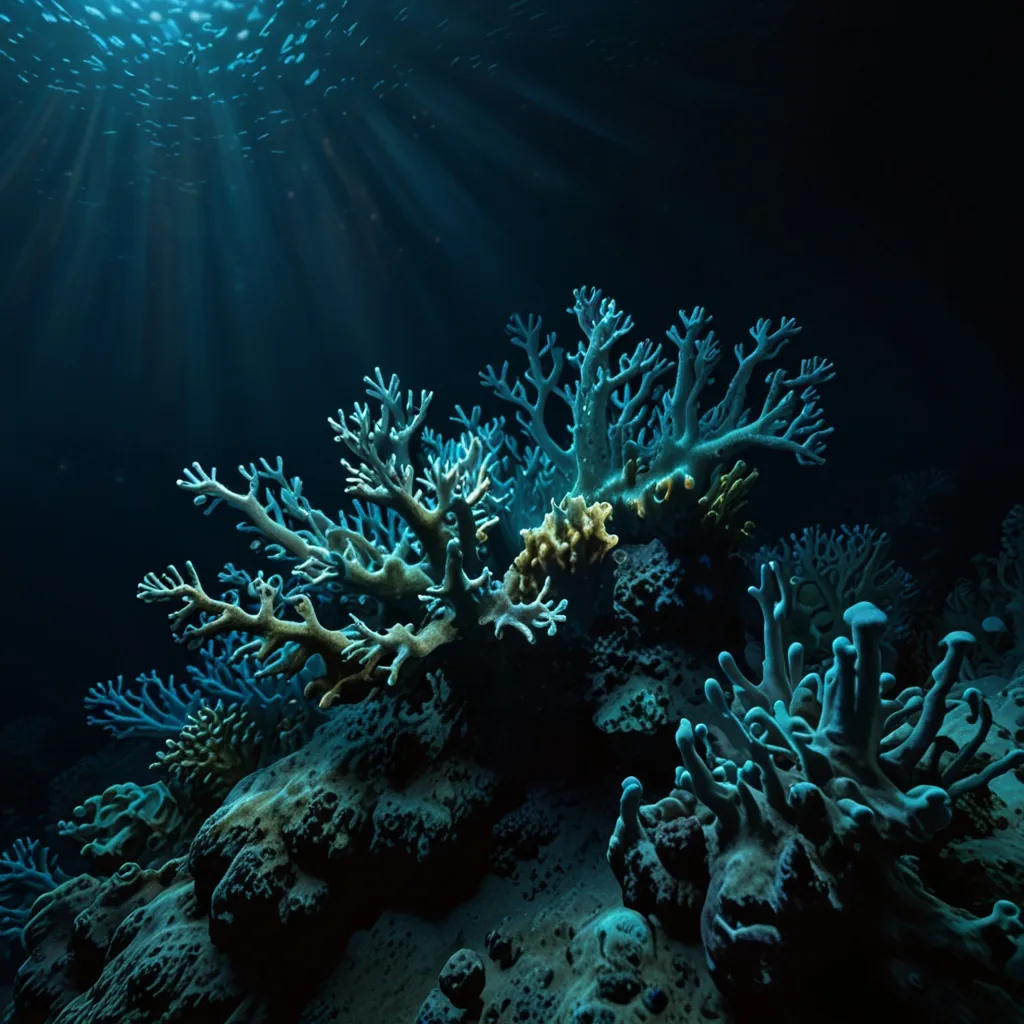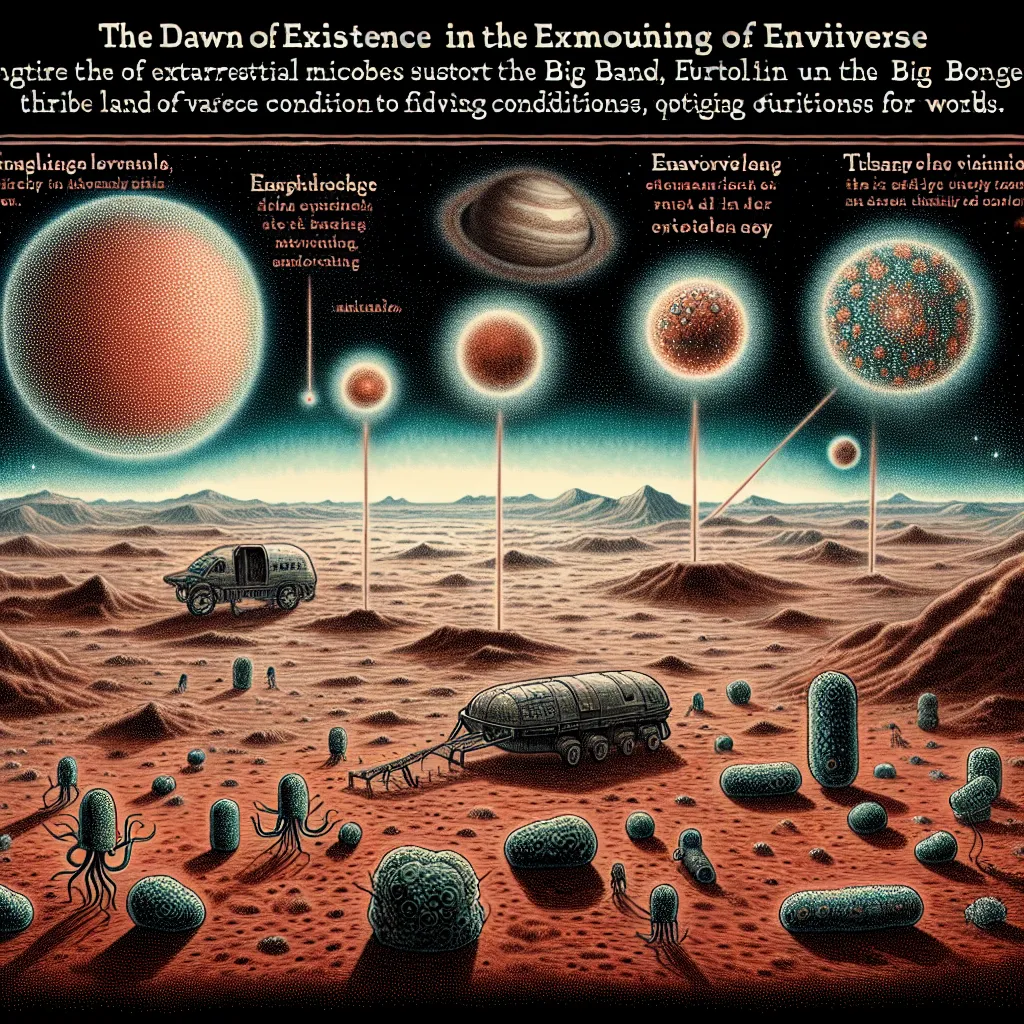The Deep Dark Secret of the Ocean Floor
Imagine diving into the inky blackness of the deep ocean, where sunlight can’t penetrate and bizarre creatures lurk in the shadows. It’s a world we’ve barely scratched the surface of - we’ve only explored about 5% of our planet’s oceans. But recently, scientists stumbled upon something that’s turning our understanding of the deep sea upside down.
Picture this: 5,000 meters below the surface, in pitch-black waters, there’s a mysterious source of oxygen. Yep, you heard that right. Oxygen, where it shouldn’t exist. It’s not the awakening of Cthulhu (sorry, Lovecraft fans), but it’s something that might just change science as we know it.
This wild discovery happened by accident back in 2013. Andrew Sweetman, a researcher with a cool job studying the ocean floor, was poking around an area between Hawaii and Mexico called the Clarion-Clipperton Zone. This place is huge - bigger than India - and it’s filled with weird metallic rocks scattered across the seabed.
Sweetman and his team were doing what marine scientists do - sending down fancy machines to measure oxygen levels. They expected to see oxygen levels drop as tiny sea critters used it up. But something bizarre happened. The oxygen levels were going up. It was like finding a freshwater spring in the middle of the Sahara.
At first, Sweetman thought their equipment was busted. I mean, who wouldn’t? Every deep-sea study ever done had only seen oxygen being consumed, not produced. So, they shrugged it off and moved on. But science has a funny way of nudging us towards the truth.
Fast forward to 2021. Sweetman’s back at sea, and guess what? Same weird results. This time, they used different equipment, so it couldn’t be a fluke. That’s when it hit him - for eight years, he might have been sitting on a groundbreaking discovery.
Now, let’s talk about why this is such a big deal. Most of Earth’s oxygen comes from photosynthesis - you know, plants and algae soaking up sunlight and pumping out oxygen. But sunlight only reaches about 200 meters deep in the ocean on a good day. So how does oxygen usually get to the ocean floor?
It’s a bit like a slow-motion waterfall. Cold water from the poles, rich in oxygen, sinks and slowly creeps along the ocean floor. This underwater river takes hundreds or even thousands of years to circulate. It’s been our go-to explanation for how deep-sea critters get their oxygen fix.
But Sweetman’s discovery throws a wrench in the works. It suggests there might be a source of oxygen right there on the seafloor. And not just a little - we’re talking levels that rival surface waters teeming with algae.
So, what’s going on down there? This is where those weird metallic rocks come in. They’re called polymetallic nodules, and they’re packed with valuable metals like cobalt and nickel. Mining companies are itching to get their hands on them.
Sweetman teamed up with a chemistry professor named Franc Giger to crack the mystery. They came up with a wild theory: these nodules might be acting like natural batteries, splitting water into hydrogen and oxygen.
To test this, they recreated deep-sea conditions in the lab. They sterilized everything to make sure no sneaky oxygen-producing organisms were hiding out. And lo and behold, oxygen levels still went up.
Back on land, they measured tiny electrical currents coming from these nodules - almost enough to power a small LED. It’s like Mother Nature decided to build a bunch of weak batteries and scatter them across the ocean floor.
They dubbed this phenomenon “dark oxygen” because, well, scientists love slapping “dark” in front of things they don’t understand (looking at you, dark matter and dark energy).
Now, this discovery could have huge implications. If these nodules are essential oxygen sources for deep-sea life, it might put a damper on those deep-sea mining plans. Some areas that were mined decades ago still haven’t recovered - not even bacteria want to live there.
It also makes us rethink how we search for signs of life on other planets. If oxygen can be produced without life, those oxygen signatures we look for on exoplanets might just be coming from space rocks.
Of course, not everyone’s convinced. Some folks, especially those with mining interests, are skeptical. They think there might be other explanations, like oxygen contamination from outside sources.
As for me, I’m not totally sold on the battery idea either. Making a battery that doesn’t run out of juice quickly is tricky business. There might be something else going on that we haven’t figured out yet.
What do you think? Could there be tiny batteries scattered across the ocean floor, quietly pumping out oxygen? Or is there another explanation we haven’t thought of yet? The ocean still has plenty of secrets to reveal, and this might just be the tip of the iceberg - or should I say, the top of the seafloor nodule.
One thing’s for sure - the deep ocean just got a whole lot more interesting. Who knows what other mysteries are lurking in the darkness, waiting to be discovered? It’s a reminder that our planet still has plenty of surprises up its sleeve, even in places we thought we understood. So next time you’re at the beach, staring out at the vast ocean, remember - there’s a whole world of wonder beneath those waves, and we’re just beginning to unravel its secrets.






